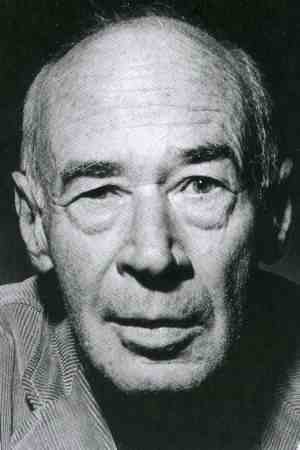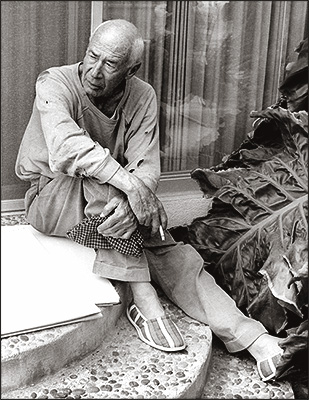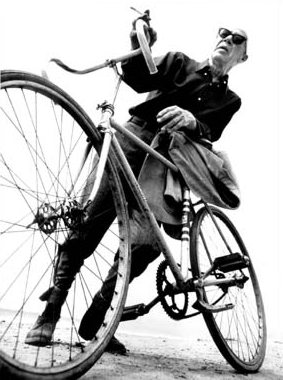<Back to Index>
- Mathematician Charles Babbage, 1791
- Novelist Henry Valentine Miller, 1891
- 1st Chairman of the People's Republic of China Mao Zedong, 1893
PAGE SPONSOR



Henry Valentine Miller (December 26, 1891 – June 7, 1980) was an American novelist and painter. He was known for breaking with existing literary forms and developing a new sort of 'novel' that is a mixture of novel, autobiography, social criticism, philosophical reflection, surrealist free association, and mysticism, one that is distinctly always about and expressive of the real-life Henry Miller and yet is also fictional. His most characteristic works of this kind are Tropic of Cancer, Tropic of Capricorn and Black Spring. He also wrote travel memoirs and essays of literary criticism and analysis.
Miller was born to tailor Heinrich Miller and Louise Marie Neiting, in the Yorkville section of Manhattan, New York City, of German Catholic heritage. As a child he lived at 662 Driggs Avenue in Williamsburg, Brooklyn, known in that time (and referred to frequently in his works) as The Fourteenth Ward. As a young man, he was active with the Socialist Party (his "quondam idol" was the Black Socialist Hubert Harrison). He briefly — for only one semester — attended the City College of New York. Although he was an exceptional scholar, he was willing neither to be anchored nor to submit to the traditional college system of education.
In both 1928 and 1929, he spent several months in Paris with his second wife, June Edith Smith (June Miller) (his first wife was Beatrice Sylvas Wickens, whom he married in 1917). The next year he moved to Paris unaccompanied, and he continued to live there until the outbreak of World War II. Althouth Miller had little or no money the first year in Paris, things began to change with the meeting of Anais Nin who would go on to pay his entire way through the 1930s including the rent for the beautiful and modern apartment at 18, villa Seurat. Anaïs Nin became his lover and financed the first printing of Tropic of Cancer in 1934 with money from Otto Rank.
In the fall of 1931, Miller was employed by the Chicago Tribune (Paris edition) as a proofreader, thanks to his friend Alfred Perlès who worked there. Miller took this opportunity to submit some of his own articles under Perlès name, since only the editorial staff were permitted to publish in the paper in 1934. This period in Paris was highly creative for Miller, and during this time he also established a significant and influential network of authors circulating around the Villa Seurat. One author who became a lifelong friend was the young British author Lawrence Durrell. Durrell, who lived in Corfu, invited Miller out to Greece, a visit which Miller describes vividly in The Colossus of Maroussi. Miller's correspondence with Durrell was later published. During the Paris period he was also influenced by the French Surrealists.
His works contain detailed accounts of sexual experiences, and his books did much to free the discussion of sexual subjects in American writing from both legal and social restrictions. He continued to write novels that were banned in the United States on the grounds of obscenity. Along with Tropic of Cancer, his Black Spring (1936) and Tropic of Capricorn (1939) were smuggled into his native country, building Miller an underground reputation. One of the first acknowledgments of Henry Miller as a major modern writer was by George Orwell in his 1940 essay Inside the Whale, where he wrote:
| “ | Here in my opinion is the only imaginative prose-writer of the slightest value who has appeared among the English-speaking races for some years past. Even if that is objected to as an overstatement, it will probably be admitted that Miller is a writer out of the ordinary, worth more than a single glance; and after all, he is a completely negative, unconstructive, amoral writer, a mere Jonah, a passive acceptor of evil, a sort of Whitman among the corpses. | ” |
In 1940, he returned to the United States, settling in Big Sur, California, and continued to produce vividly written works that challenged contemporary American cultural values and moral attitudes. He spent the last years of his life at his home in 444 Ocampo Drive, Pacific Palisades, Los Angeles, California. While Miller was establishing his base in Big Sur, the 'Tropics' books, still banned in the USA, were being published in France by the Obelisk Press and later the Olympia Press. There they were acquiring a slow and steady notoriety among both Europeans and the various enclaves of American cultural exiles. As a result, the books were frequently smuggled into the States, where they would prove to be a major influence on the new Beat generation of American writers (most notably Jack Kerouac) some of whom would adopt stylistic and thematic principles found in Miller's oeuvre.
The publication of Miller's Tropic of Cancer in the United States in 1961 led to a series of obscenity trials that tested American laws on pornography. The U.S. Supreme Court, in Grove Press, Inc., v. Gerstein, citing Jacobellis v. Ohio (which was decided the same day in 1964), overruled the state court findings of obscenity and declared the book a work of literature; it was one of the notable events in what has come to be known as the sexual revolution. Elmer Gertz, the lawyer who successfully argued the initial case for the novel's publication in Illinois, became a lifelong friend of Miller's. Volumes of their correspondence have been published.
In addition to his literary abilities, Miller was a painter and wrote books about his work in that field. He was a close friend of the French painter Grégoire Michonze. He was also an amateur pianist.
After his move to Pacific Palisades, he held innumerable dinner parties for a host of famous guests. His cook and caretaker was a young artist's model called Twinka Thiebaud who later wrote a book of his evening chats: Reflections published by Capra Press in 1981. (This book is being extensively rewritten for republication in 2010.)
During the last four years of his life, Miller held an ongoing correspondence of over 1500 letters with Brenda Venus, a young and vivacious Playboy playmate, actress and dancer. An article detailing their affair ran in a special edition of Playboy in 1996. The article called her Miller's "twilight muse" during the bedridden final years of his life.
Before his death, Miller filmed with Warren Beatty for his film Reds. He spoke of his remembrances of John Reed and Louise Bryant as part of a series of 'witnesses'. The film was released eighteen months after Miller's death.
Miller died in Pacific Palisades in 1980. After his death, he was cremated and his ashes scattered off Big Sur.
Miller's papers were donated to the UCLA Young Research Library Department of Special Collections. The Henry Miller Art Museum at Coast Gallery in Big Sur, the Harry Ransom Humanities Research Center at the University of Texas at Austin, and UCLA all hold a selection of Miller's watercolors, as did The Henry Miller Museum of Art in Omachi City in Nagano, Japan, before closing in 2003. A portion of the correspondence between the Grove Press and Henry Miller are currently housed in the Special Collections Research Center at Syracuse University. Special Collections at the University of Victoria holds a significant collection of Miller's manuscripts and correspondences, including the corrected typescript for Max and Quiet Days in Clichy, as well as Miller's lengthy correspondence with Alfred Perlès.